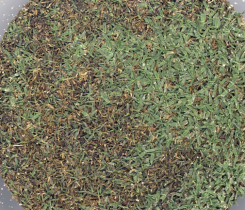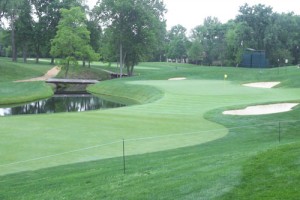Under the microscope: Pythium blight
Pythium blight (pathogen: Pythium spp. P. aultimum, P. aphanidermatum) during hot humid weather can be a serious problem on creeping bentgrass (Agrostis stolonifera) and annual bluegrasss (Poa annua) greens and to a lesser extent bermudagrass (Cynodon dactylon). Generally, this disease is most severe on turf sites that are wet or poorly drained and where the turf is under summertime stress. These areas include high traffic areas where compaction occurs, like the ends of fairways where mowers may turn. On tees, Pythium blight may initially appear around divots where the turf is under additional stress.
Pythium blight is active when temperatures occur between 86 and 95 F and nighttime temperatures remain above 70 F. However under extremely humid and wet conditions Pythium blight will occur at nighttime temperatures below 70 F. The risk of Pythium blight increases on turf growing in low-lying areas where water accumulates, on compacted soils, and on thatchy turf.
Symptoms on putting greens normally start off as small patches that rapidly increase in diameter becoming more irregular shaped. If you rub some of the leaves early in the morning they will appear oily (thus, the common name “grease spot”). Leaves become a light tan color as they shrivel. The leaves can become matted and covered with a white mass of mycelium. Generally speaking fungicide control is most effective when applied preventatively.
— Karl Danneberger, Ph.D.










